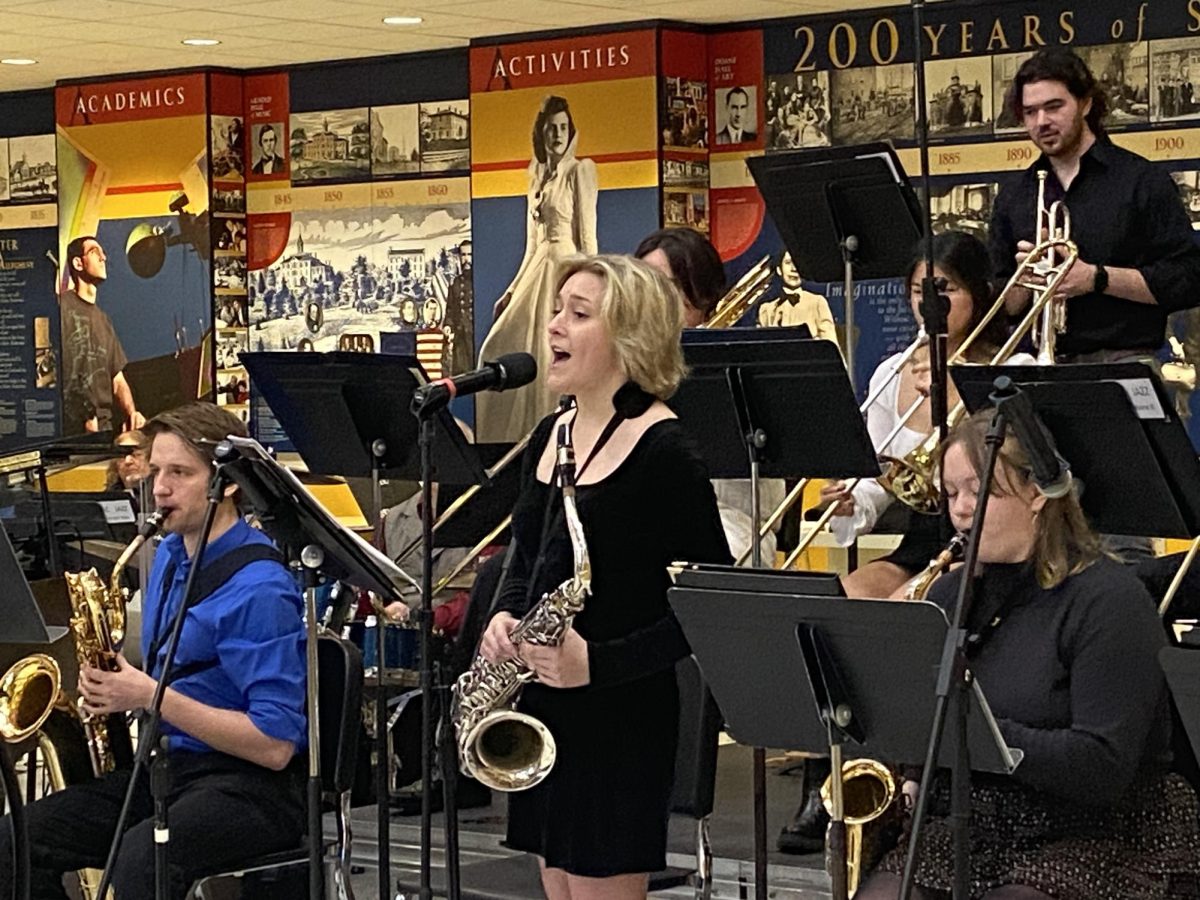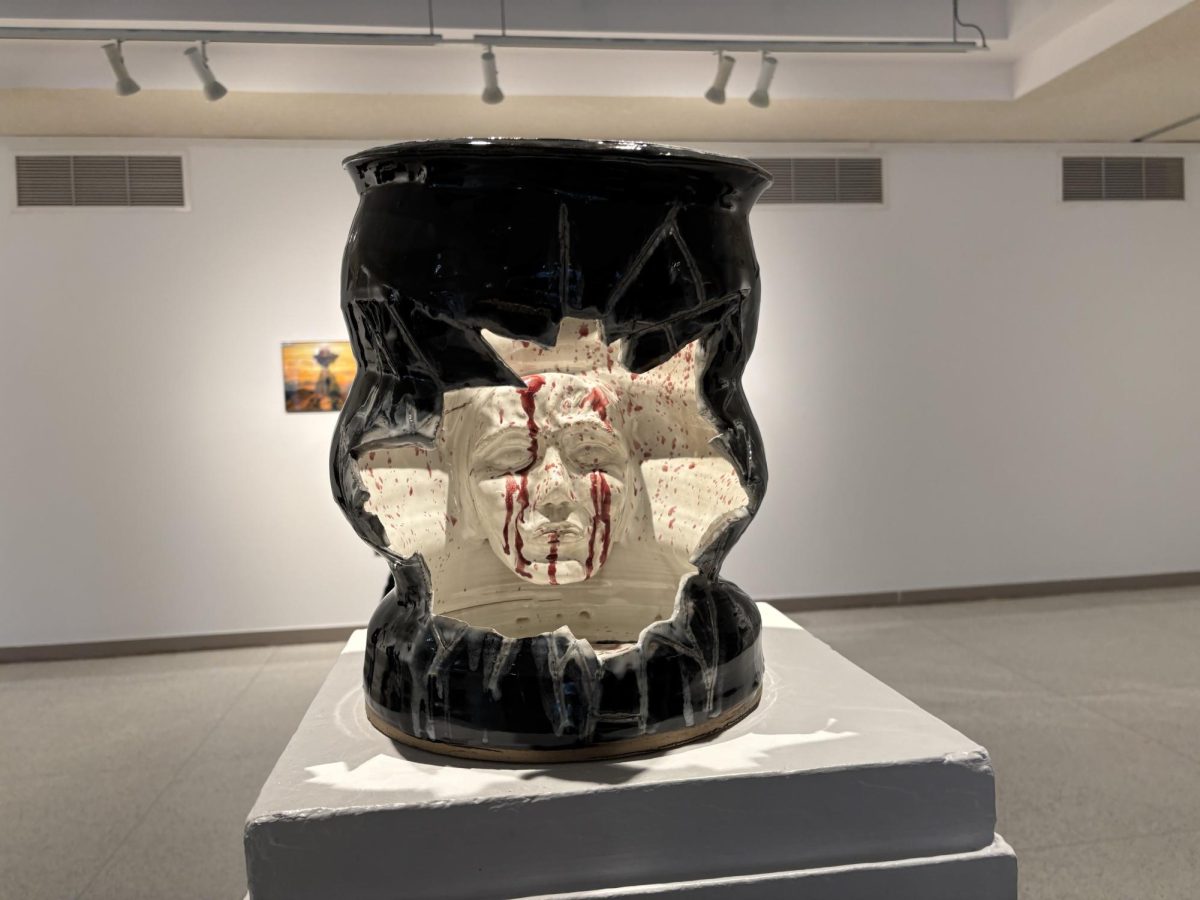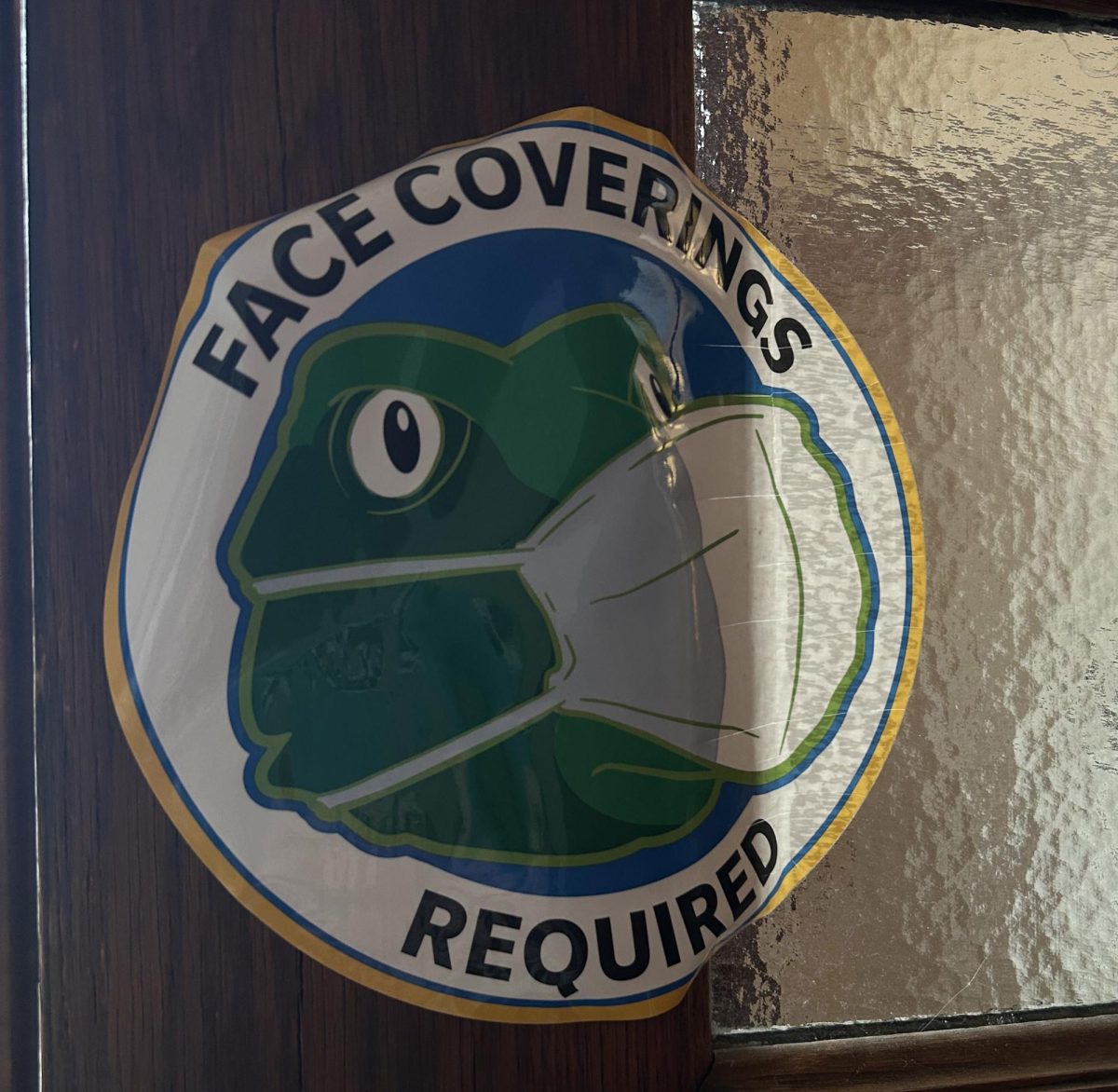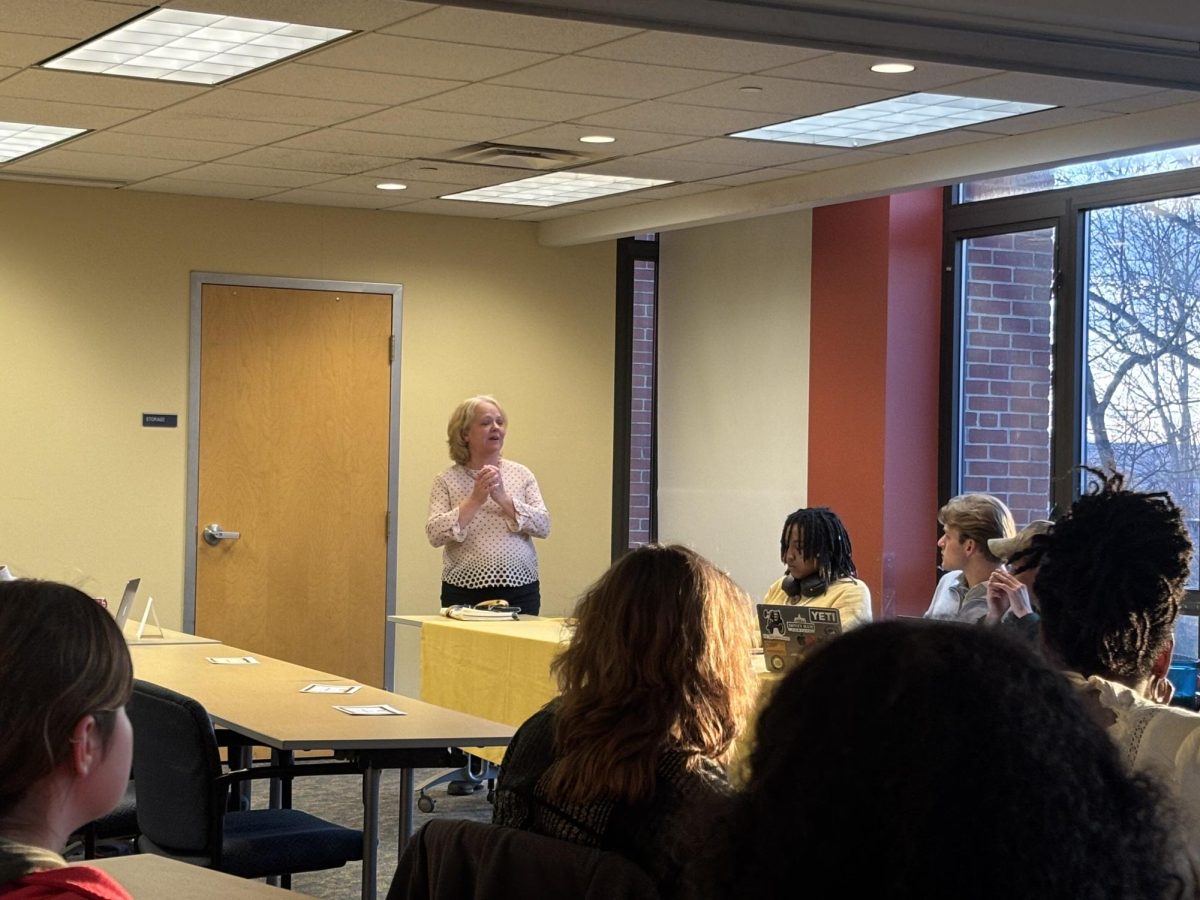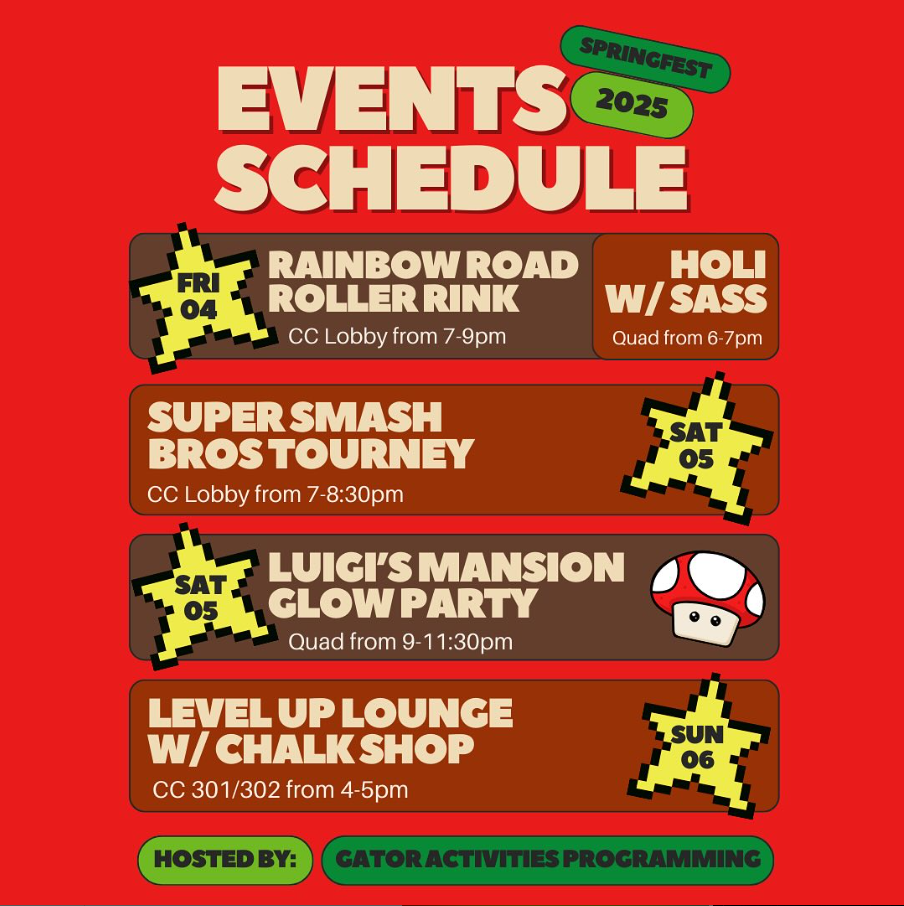At the Jazz Ensemble performance Sunday, Dec. 3, band director Rob Roth emphasized that this semester’s rehearsals have been defined by a single mood: fun. The concert, which took place in the lobby of the Henderson Campus Center at 3:15 p.m., brought that energy to an otherwise rainy weekend with an eight-track blitz through the music of Stevie Wonder. The lineup displayed standout solos by eight performers. In addition to the standard collection of horns, guitar, bass and drums, bongos and vibraphone added a rich texture to each song on the program.
Wonder plays piano, organ, drums and harmonica — extremely well. Born in 1950, he was recording albums by the time he was in his preteens. His music influenced a variety of domains: R&B, funk, soul, gospel, jazz and pop genres all still echo with Wonder’s distinct musical style, while his work’s engagement with humanitarian causes means that his impact reverberates way beyond the radio. As a designated Messenger of Peace, Wonder’s United Nations page credits him as having “written, produced or performed songs for charities in support of disabilities, AIDS, cancer, diabetes, hunger and homelessness, domestic abuse and other causes on behalf of children and adults” and “spearheaded a campaign to make Martin Luther King Day a federal holiday in the United States,” among an entire lifetime changing the public perception of what people with visual impairments like himself can achieve.
I wish that a little more time and effort could have been dedicated during the performance to covering not just Stevie Wonder’s music, but his biography as well. In between songs, Roth mentioned Wonder’s lifetime achievement award, Grammy wins and permeation throughout the radio charts, but mixed up or breezed over key details about Stevie Wonder’s life. Roth said that Stevie Wonder’s first professional recording credit was at the age of 12 playing with Ray Charles, but it seems as though the record Roth may have been thinking of was “Tribute to Uncle Ray,” a cover album produced alongside Clarence Paul and released in 1962. “Little Stevie Wonder,” as he was known early in his career, was frequently compared to Charles because they were both Black, blind piano players, but Stevie Wonder did not play at this time with Charles. It’s important to recognize their respective contributions to popular culture as distinct from one another.
The band led the performance with one of Stevie Wonder’s most recognizable songs. “I Wish” is a highly-danceable funk groove with nostalgic lyrics that is reminiscent of an earlier, wilder, more carefree era. But during this instrumental rendition, attendees seemed enthusiastic for the present moment. By the second song, “Boogie on Reggae Woman,” I noticed students strolling into Kins for a late lunch, who perhaps hadn’t anticipated walking into a full-blown jazz concert but stuck around anyway, nodding along at the edges of the crowd.
After two high-energy tracks, the set slowed down to cover “Overjoyed,” which featured a soulful extended solo from Bella James, ’24. Simon Jones, ’24, made an impressive first performance debut as a conductor while playing piano at the same time. On Wonder’s 1985 album “A Square Circle,” the only instruments listed in the liner notes for “Overjoyed” are guitar, a handful of other strings, piano and environmental percussion: “crickets, bird sounds, ocean, pebbles in pond, stone dropped, crushing leaves.” It’s hard to bring the outdoors into the Henderson Campus Center in December, but if the rain whooshing against the windows had RSVP’d in advance, it would have needed credit on the program alongside the performers.
The horns began “Tell Me Something Good” with a delightful crispness that continued throughout the song. The vibraphone, guitar and bass worked together to build up a call-and-response line with no gaps, while the horns swelled and shouted as a unit. The improv trombone solo by Jack Maruca, ’26, was playful, commanding and musically narrative. Jones and Charles Gibson, ’25, volleyed a cohesive solo back and forth between their respective spots at the marimba and piano while grinning at each other.
“Isn’t She Lovely” featured a clear, happy guitar solo from Alex Hau, ’24, who riffed on the main melody, bending and twirling its notes around in enjoyable configurations.
After special guest House of Rhythm, the band returned for “Sir Duke,” sweeping through what I thought was their most expansive performance as an entire band that afternoon. It’s hard to come back to playing your instrument after five songs and 15 minutes of sitting, but somehow they came back even stronger and absolutely crushed the song’s hard transitions between accented notes and slurred climbs up and down the ledger lines.
By now, audiences had had plenty of time to peruse the program to see what was up next. But a good performer never shows all their cards—the band kept exciting surprises coming with solos from James and Nolan Kons, ’26, throughout “You Are the Sunshine of My Life.” James stood up and sang the whole piece, occasionally holding up her saxophone to play a few bars before returning to the lyrics. It was incredibly impressive.
No Wonder concert is complete without “Superstition.” Saving this piece for last was a satisfying endcap to the musical performance. The chorus sounded as if it could’ve been the studio version I’d been studying up on all week leading up to the concert.
If there are any drummers reading The Campus this week, you should know that the jazz band is looking for a drummer! You’d be joining a talented crew of peers who seem to all know how to have a fantastic time onstage and in the practice room.
Categories:
Review: Jazz Ensemble thrills audience with Stevie Wonder
Bella James, ’24, sings a solo during the Jazz Ensemble concert on Sunday, Dec. 3, in the lobby of the Henderson Campus Center.
Story continues below advertisement
0
More to Discover
About the Contributors

Milo Watson, Layout Editor
Milo Watson is a junior from Delaware. He double-majors in English with a focus in Nonfiction Creative Writing and Environmental Science & Sustainability. This is his first year on staff. He enjoys reading outside.

Anna Westbrook, Editor-in-Chief
Anna Westbrook is a junior from the Washington, D.C. area. They are majoring in Environmental Science and Sustainability with a concentration in law & policy and a minor in Political Science. This is their third year on staff; they were first a News Writer, then served as News Editor, and now as Editor-in-Chief. In their free time, Anna likes to read, play the piano, go on camping trips with their friends, and drink a copious amount of coffee.



